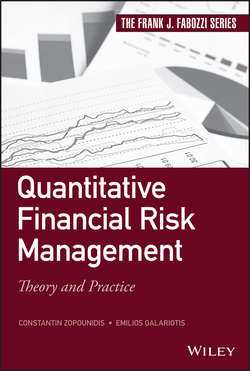Читать книгу Quantitative Financial Risk Management - Galariotis Emilios - Страница 7
На сайте Литреса книга снята с продажи.
Section One
Supervisory Risk Management
Chapter 1
Measuring Systemic Risk: Structural Approaches
ОглавлениеRaimund M. Kovacevic
ISOR, Department of Statistics and OR, University of Vienna, Austria
Georg Ch. Pflug
ISOR and IIASA, Laxenburg
“Systemic risks are developments that threaten the stability of the financial system as a whole and consequently the broader economy, not just that of one or two institutions.”
– Ben Bernanke, ex-chairman of the US Federal Reserve Bank.
The global financial crisis of 2007–2008, often considered as the worst financial crisis since the Great Depression of the 1930s, resulted in a change of paradigms in the financial and banking sector. These crisis years saw collapses of large financial institutions, bailouts of banks by governments, and declines of stock markets. Triggered by the U.S. housing bubble, which itself was caused by giving easy access to loans for subprime borrowers, financial distress spread over the banking sector and led to failure of key businesses and to the 2008–2012 global recession. Finally, this also contributed to the European sovereign-debt crisis, with lots of aftereffects in our present times.
Uncertainties about bank solvency, declines in credit availability, and reduced investor confidence had an impact on global stock markets. Governments responded with fiscal measures and institutional bailouts, which in the long term resulted in extreme public debts and necessary tax increases.
This negative experience demonstrates that the economy as a whole, but especially the financial sector is subject to risks, which are grounded in the interdependencies between the different economic actors and not in the performance of individual actors. This type of risk is generally called systemic risk. While aspects of systemic risk (e.g., bank run and contagion) were always an issue in discussions about the financial system, the recent crises have increased the interest in the topic, not only in academic circles, but also among regulators and central banks.
